If you’ve ever wondered, “Can capybaras swim?” the answer is a resounding yes—and they’re amazing at it! These gentle giants, often dubbed “nature’s chillest rodents,” are not just land lovers; they’re semi-aquatic marvels with a knack for gliding through water like pros. But what makes them such incredible swimmers? Let’s dive into the fascinating world of capybaras and their aquatic adventures.
Why Do Capybaras Swim?
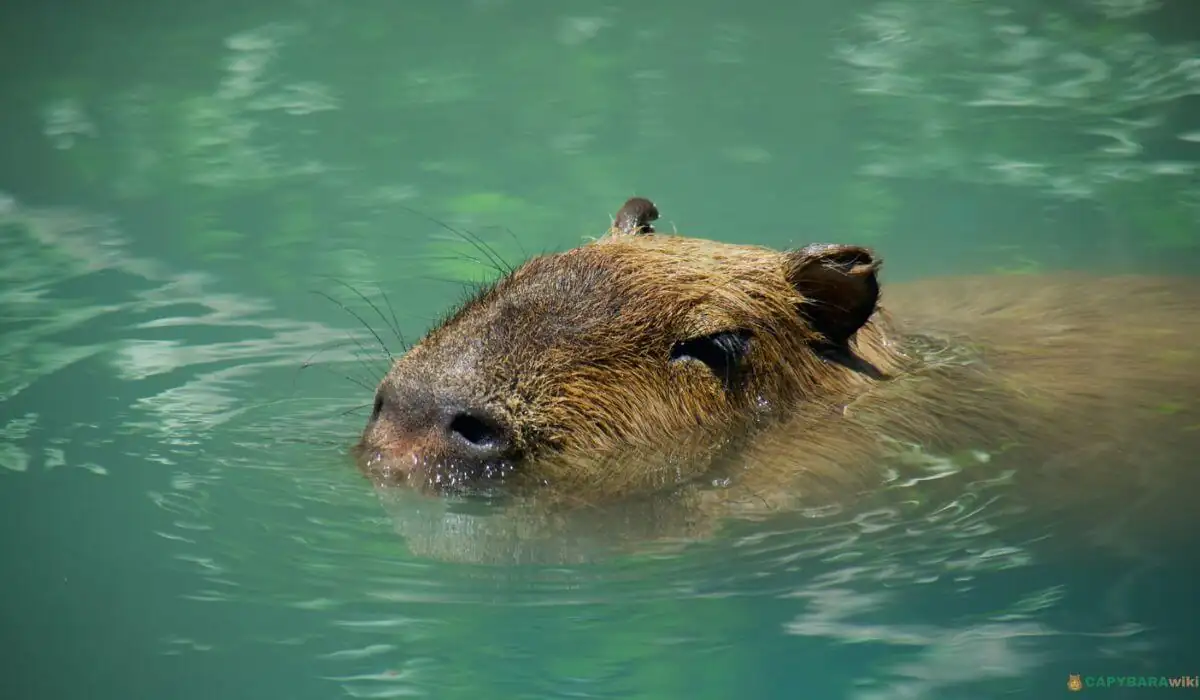
Capybaras are native to South America, where they live near rivers, lakes, and marshes. For them, swimming isn’t just a hobby—it’s a survival skill. Here’s why they love the water:
- Escape from Predators: Jaguars, anacondas, and caimans are always on the prowl. Water is their safe haven, where they can dive and disappear from danger.
- Thermoregulation: Capybaras don’t sweat, so they rely on water to cool off in the scorching heat.
- Social Bonding: Swimming is a group activity for capybaras. They often swim together, strengthening social bonds within their herds.
- Food Source: Aquatic plants make up a big part of their diet, so swimming is essential for foraging.
How Capybaras Are Built for Swimming
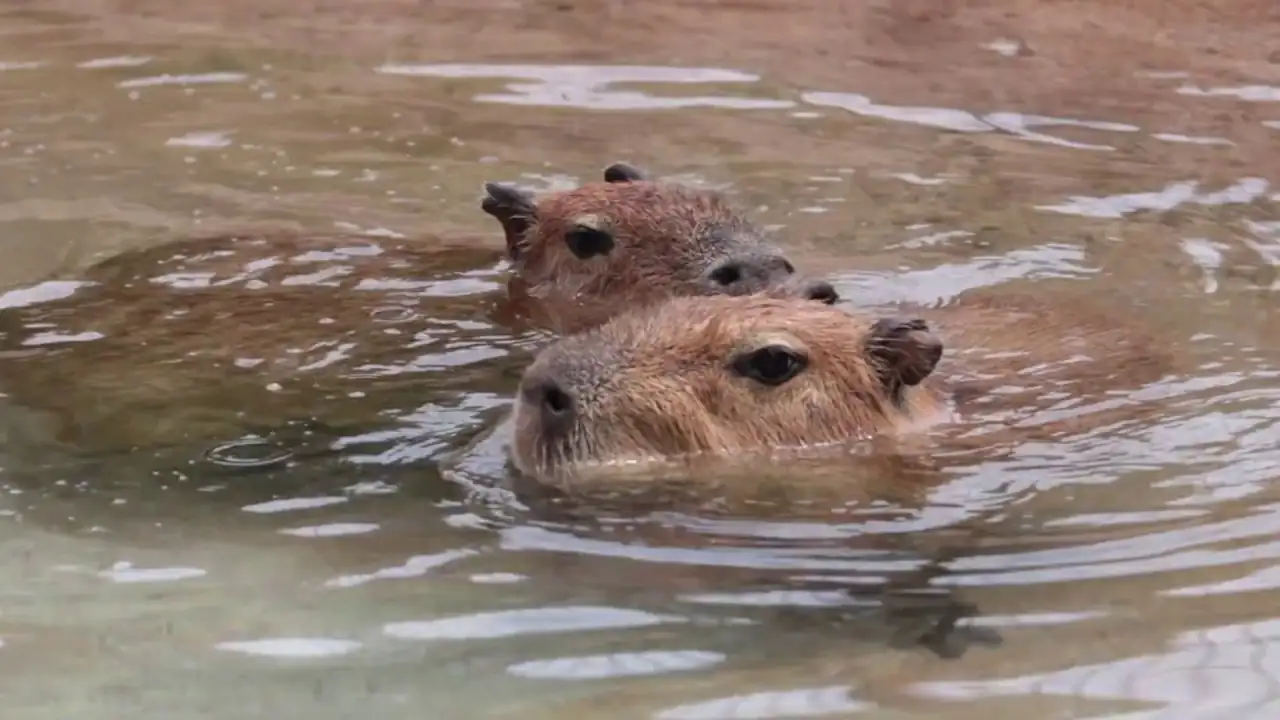
Capybaras aren’t just good swimmers by chance—they’re engineered for it. Here’s how their bodies are perfectly adapted for life in the water:
1. Webbed Toes and Clawed Feet
Their partially webbed feet act like natural paddles, helping them glide effortlessly through water. The claws? Perfect for gripping slippery surfaces like muddy banks.
2. High-Positioned Eyes, Ears, and Nostrils
Ever noticed how capybaras can keep most of their bodies submerged while still breathing and staying alert? Their eyes, ears, and nostrils are positioned high on their heads, allowing them to stay hidden from predators while keeping their senses sharp.
3. Strong Lungs and Breath-Holding Skills
Capybaras can hold their breath for up to five minutes, making them expert divers when escaping threats.
4. Wiry Fur That Repels Water
Their coarse, wiry fur doesn’t soak up water, so they don’t get weighed down. It also dries quickly, keeping them comfortable on land.
5. Powerful Hind Legs
Their slightly longer hind legs give them the thrust they need to swim at impressive speeds—up to 5 miles per hour!
How Fast Can Capybaras Swim?

Capybaras are surprisingly speedy in the water. While they usually prefer a leisurely paddle, they can hit speeds of 5 mph (8 km/h) when they need to—like when escaping predators. To put that in perspective, that’s faster than the average kayak!
Can Capybaras Swim Underwater?
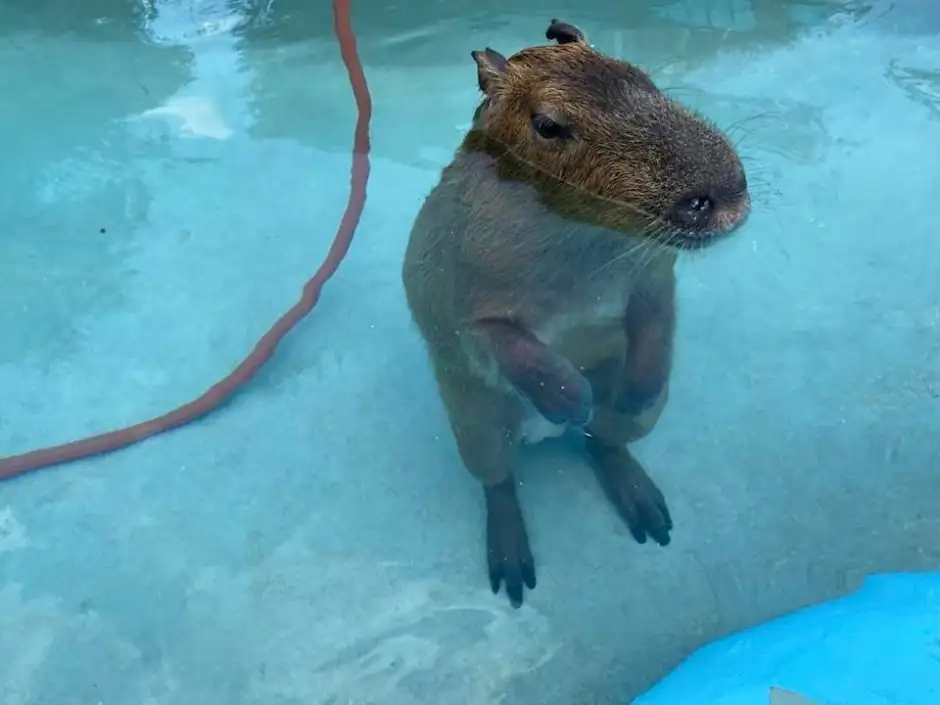
Yes, they can! While they can’t breathe underwater, capybaras are skilled at diving and staying submerged for up to five minutes. They often use this ability to evade predators or simply nap with just their noses above the surface.
Do Capybaras Like Hot Springs?

You might have seen viral videos of capybaras chilling in hot springs. While they don’t naturally seek out hot springs in the wild (they’re native to warm South American climates), they do enjoy the warmth, especially in colder environments like Japanese zoos during winter.
Is It Safe to Swim with Capybaras?
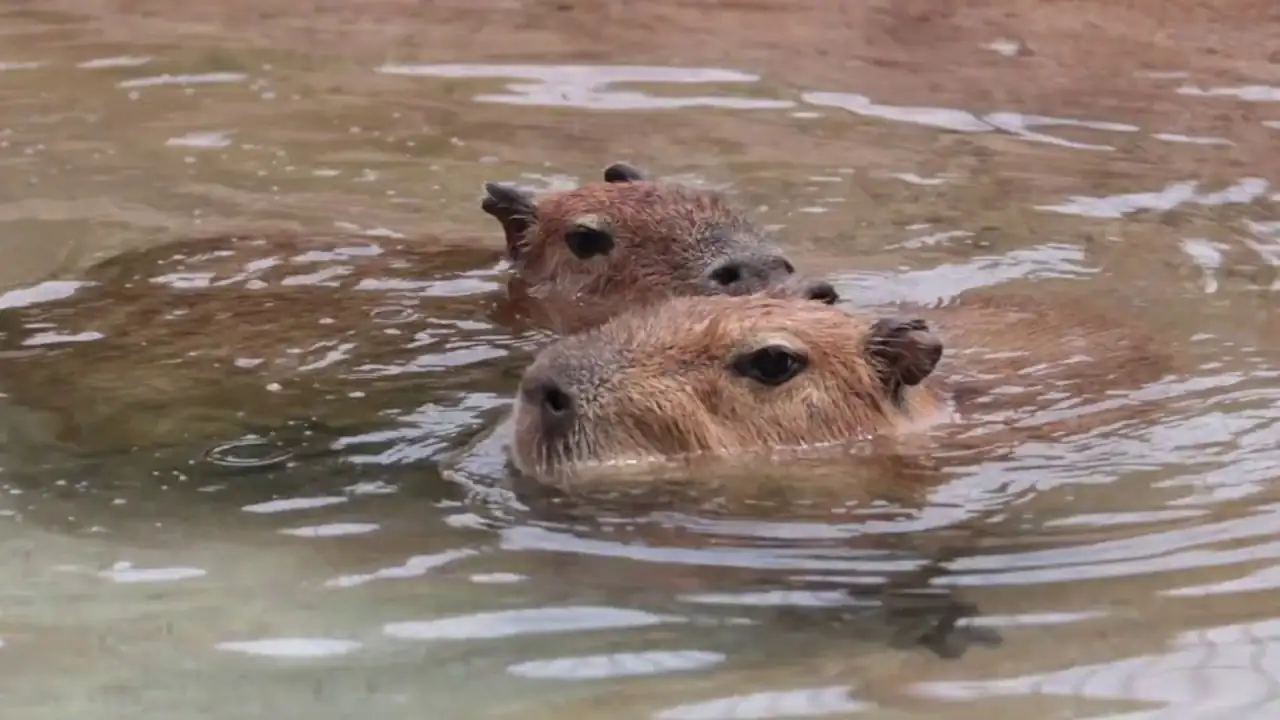
While capybaras are generally peaceful, swimming with them isn’t recommended. Here’s why:
- Wild Capybaras: They can become aggressive if they feel threatened, especially during mating season or when protecting their young.
- Pet Capybaras: Even domesticated capybaras have sharp teeth and strong jaws. Always respect their space and watch for signs of discomfort.
How Much Time Do Capybaras Spend Swimming?

Capybaras are semi-aquatic, meaning they spend a lot of time in the water. On some days, they might even swim more than they walk on land! They often sleep in the water, with only their noses exposed, to stay safe from predators.
Fun Facts About Capybaras and Water
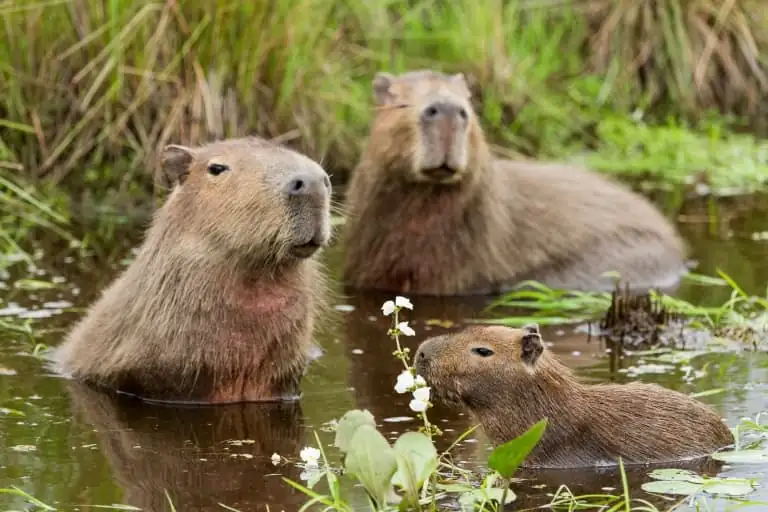
- Sleeping in Water: Capybaras can nap while floating, keeping their noses above the surface to breathe.
- Swimming with Oranges: A viral video showed a capybara balancing an orange on its head while swimming. Turns out, the sweet scent of citrus might be soothing for them.
- Social Swimmers: Capybaras often swim in groups, using the activity to bond and communicate.
FAQs About Capybaras and Swimming
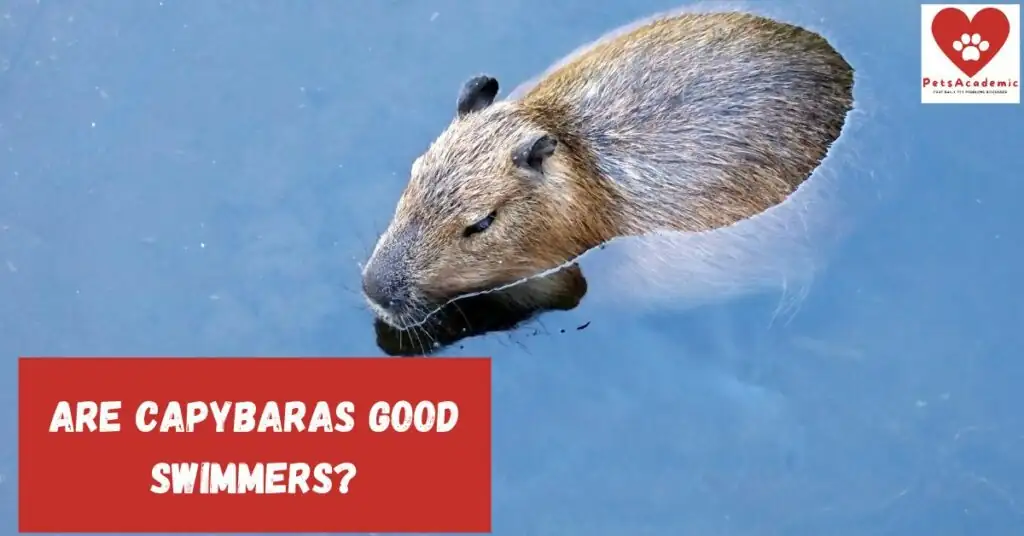
1. Can capybaras breathe underwater?
No, but they can hold their breath for up to five minutes.
2. How fast can capybaras swim?
They can reach speeds of up to 5 mph (8 km/h).
3. Do capybaras like water?
Absolutely! Water is essential for their survival, comfort, and social life.
4. Can capybaras swim in chlorine pools?
No, chlorine can irritate their skin and respiratory system. Always provide a non-chlorinated pool for pet capybaras.
5. Why do capybaras swim with oranges?
The sweet scent of oranges might be relaxing for them, and it makes for an adorable sight!
Final Thoughts: Capybaras Are Born to Swim
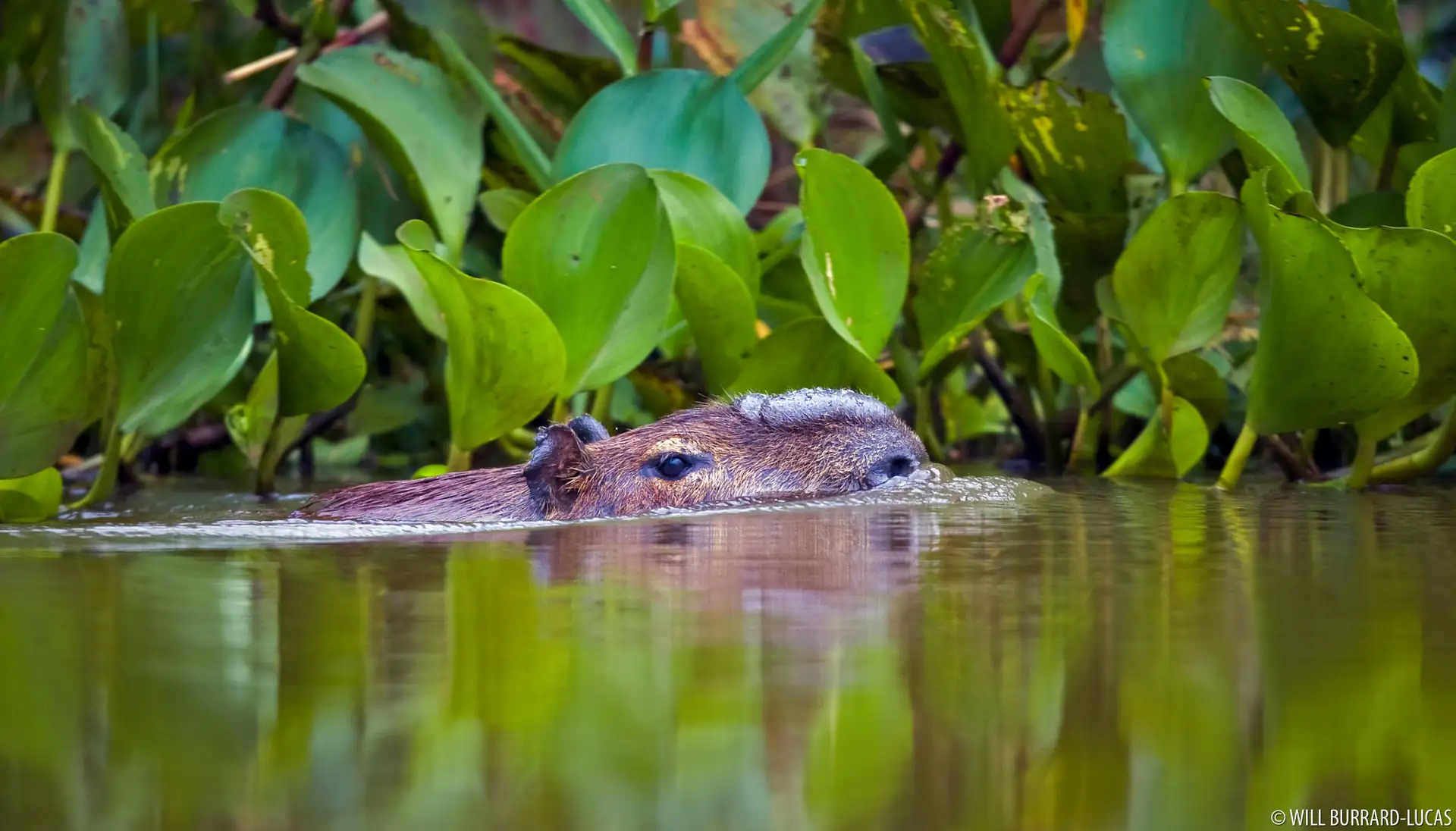
So, can capybaras swim? Not only can they swim, but they’re also masters of the water. From their webbed toes to their breath-holding skills, every aspect of their biology is tailored for an aquatic lifestyle. Whether they’re escaping predators, cooling off, or just having fun, capybaras prove that water is their natural playground.
Next time you see a capybara lounging by a river or paddling through a pond, you’ll know just how incredible these creatures are. And who knows? Maybe you’ll even spot one balancing an orange on its head!
